Lunch with... John Watson
‘Wattie’ was always quick on track, but he was no politician off it, which could be why he didn’t enjoy more success in F1 – and why he remains Britain’s most underrated GP driver.
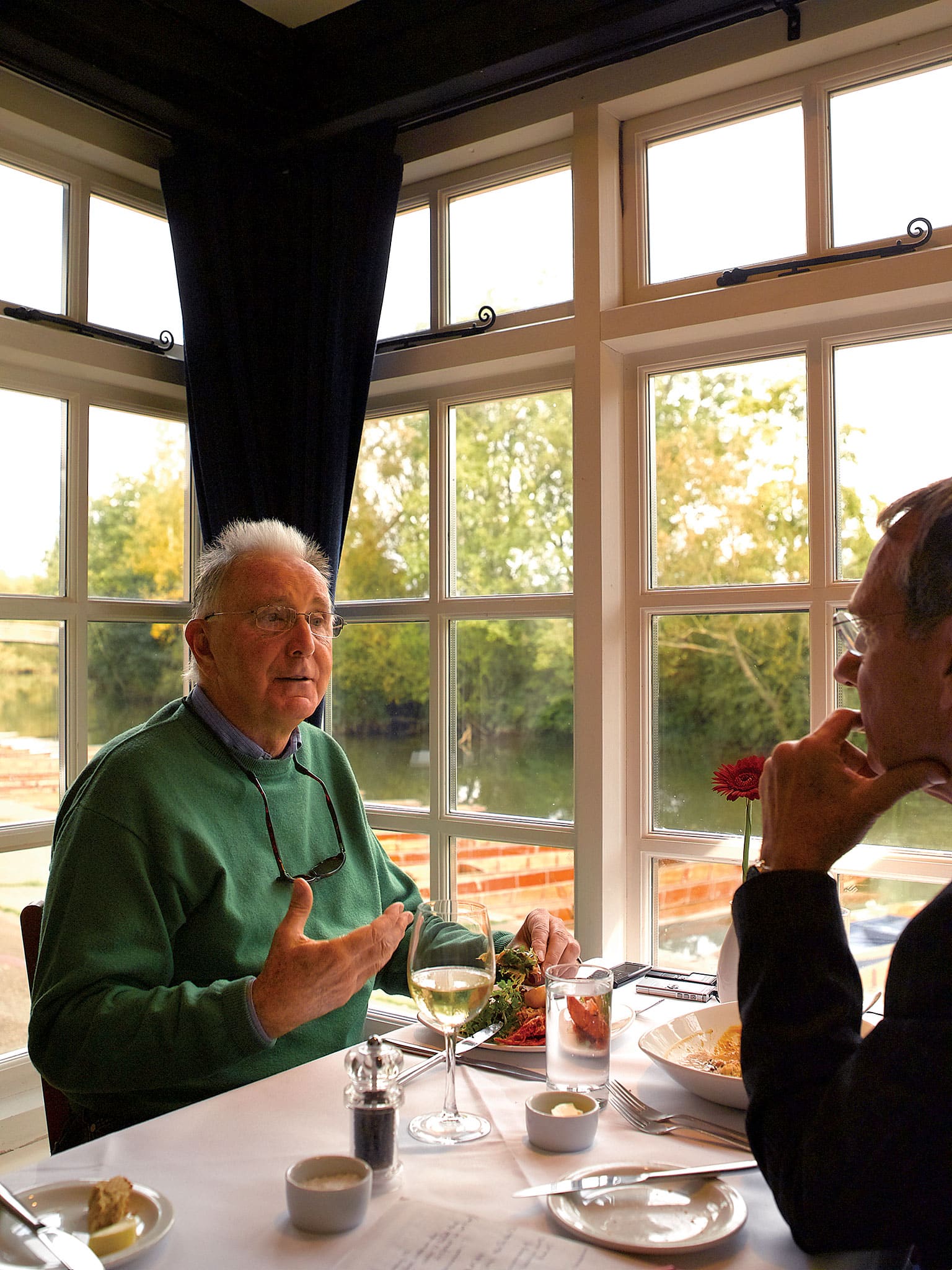
James Mitchell
Here’s a man who was Britain’s top Formula 1 driver for six consecutive seasons. A man who scored two of the greatest from-back-to-front victories in F1 history, and in his best year came oh-so-close to winning the World Championship. And yet when anoraks gather, or when pub discussions turn to a roster of all-time British F1 greats, his name is rarely mentioned. It’s almost as if posterity has forgotten about John Watson.
John himself is relaxed about this, a contented man who is passionate about his fishing, relishes his TV commentary work, and remains on friendly terms with most of F1’s movers and shakers. But this is also the man who was, says Jackie Stewart, “Too nice to win races” – which sounds like damning criticism.
“I’m not offended by what Jackie says. It’s an insight into the naïve side of my personality. When I came into F1 I thought motor racing was just about who is best on the track, a level playing field if you like. I had the self-belief to think I could beat anybody, but it took me too long to wake up to the reality that races are won and lost long before you even get to the track.”
John lives just outside Oxford now, and we’re lunching at the Cherwell Boat House, overlooking the placid river and its line-up of parked punts awaiting hire. As befits a fisherman, he orders lobster and red mullet, and a glass of white wine.
Two days set him on the rocky road to F1. One was in 1955, when he was nine years old. His father took him to the Tourist Trophy at Dundrod, up in the hills above Belfast where he was born. Marshall Watson ran a successful motor business and raced for fun, at Kirkistown and Bishop’s Court and the Curragh. He won Ireland’s first touring car race in a Citroën Light 15. “It was a family thing. My mother, my sister and I were the support crew. Then at Dundrod I saw Fangio, Moss, Hawthorn, the Mercedes 300SLRs, the D-types and Ferraris. All my dreams crystallised that day.
“I finished school with no distinction whatever – I didn’t see why I needed to pass a Latin exam to become a racing driver – and as soon as I was old enough I started racing an Austin-Healey Sprite. I became the racing driver in the family. I graduated to a Crosslé sports-racer, and then we got an old Brabham BT14 twin-cam. I won Phoenix Park two years running, and some local championships. It was just Irish racing, with the odd foray to minor meetings in England, at Rufforth and Mallory and Oulton. I was working for my father, but I hadn’t forgotten my dream.
“Then Gerry Kinnane, who bought and sold cars from a garage on the Falls Road, bought two second-hand Lotus 48 Formula 2 cars and a job lot of spares. He painted Team Ireland on the side of an old bus, and entered the Lotuses for the first round of the European Championship at Thruxton. John Pollock, an experienced Irish single-seater man, drove one, and he offered me the other. So Easter Monday 1969 was my second special day.”
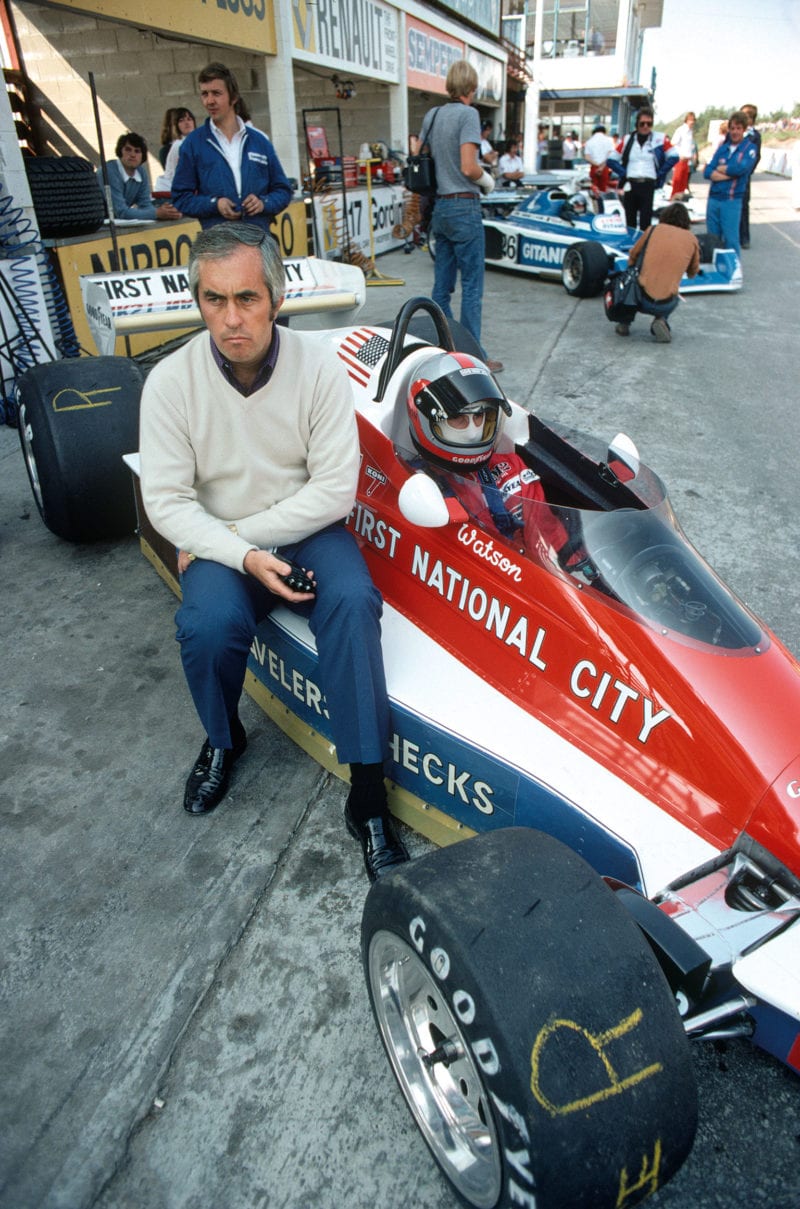
Watson scored his first win with Roger Penske in 1976, but the F1 operation was sadly short-lived
Motorsport Images
At Thruxton Jochen Rindt won from Jackie Stewart, setting a new outright lap record. F2 was a serious business in those days. But the story of the race was how an unknown 22-year-old bearded Irishman, driving an outdated car in his first major race, stormed through a strong field from 20th to fifth – before crashing.
“I’d never driven the car until I went out in practice. I’d never driven a car with wings, and F2 had the big high rear wings then. I was shy and self-effacing – I still am, although I later developed mechanisms to overcome that – and it was scary to find myself on track with Rindt, Stewart, Courage, Siffert, all the people I read about every week. Initially I was paranoid about getting in their way. But suddenly the dream became reality and I found I could compete with them, in some cases pass them and pull away, in a car that wasn’t considered very competitive.”
Slowed by a misfire in his heat, John started the final 20th on the grid. His progress up the field was astonishing. He passed the works Tecnos of François Cevert and Nanni Galli, Derek Bell’s Ferrari, then Johnny Servoz-Gavin’s Matra, Tino Brambilla’s Ferrari and Billy Ivy’s Brabham. By lap 28 he was fifth, and catching Henri Pescarolo’s Matra, when the dream ended at Cobb Corner. He ran wide under braking and wrecked the Lotus, tearing off two wheels. But he had certainly made his mark.
“That day at Thruxton changed my life. No way did I want to stay working in the family business now. My parents were happy with me racing in Ireland, but the big stuff was different. People got killed in those days – even Jim Clark, in a Lotus 48 exactly like the one I drove at Thruxton just a year later. But I’d had a sniff of my dream becoming reality, and they knew I had to go for it. So with my father’s help I got a Brabham BT30 to do F2 in 1970.”
***
This privateer effort had its ups and downs until John had a massive accident at Rouen. “I loved Rouen, those fast sweepers down the hill from the start, then the hairpin and climbing up the other side of the valley. It was all the things I’d learned from Irish road racing on tracks like Dunboyne and Phoenix Park. But in practice, through the final flat-out right-hander, a rear tyre deflated and I was off into the barriers, almost tore the car in two. Broke my arm, broke my leg, fractured my ankle. I ended up in an appalling French hospital, but Bernie Ecclestone, whom I’d never met, got me flown back to Belfast in Jochen Rindt’s plane. It was a bad weekend: Jean-Luc Salomon and Denis Dayan were both killed in the F3 race.

In Gordon Murray’s Brabham BT46 in 1978, pre-Fan Car outrage
Motorsport Images
“We got the Brabham mended for the 1971 season, but money was very short now, and I had to take it race by race. Derek Bell offered me the use of his workshop in Bognor Regis, so I went to live in Bognor and I employed Derek’s mechanic, George Brown. We went around Europe in an old Ford Transit, towing the Brabham on a trailer, each of us driving two hours on, two hours off. As a privateer you’re always trying to finish, so you can get to the next race for the start money. I couldn’t afford the Brian Hart FVAs that the top teams were using. I’d drive up to Cosworths in Northampton in my Renault 4L and buy the bits, and George would strip the engine, do whatever it needed – valves, pistons, shells. My engine never saw a dyno, but it never failed. There are a lot of unsung heroes in motor racing, and George is one of them. But that Christmas I had to tell him I couldn’t afford to employ him any more. The new 2-litre F2 was coming in, and we couldn’t run to a new car.”
It seemed like the end of the road. Other drivers who’d shown speed in uncompetitive cars would have been knocking on doors and hustling for drives, but that wasn’t in John’s nature. But gradually drives came to him. “Sadly Bert Hawthorne was killed in Alan McCall’s Tui at Hockenheim. Alan was short of money, but he rebuilt the car and asked me to drive it. I provided my old Transit and trailer, and we shared any prize money. It got me racing again. And Chevron gave me an F2 ride in the Rothmans 50,000, a combined F1/F5000/F2 race at Brands Hatch. I finished sixth, ahead of all the F5000s. A week later I had my first Formula 1 drive.
“This was in the Eifelland March, the Coloni-bodied car that Rolf Stommelen had driven that season. Bernie Ecclestone picked it up, and sold it on to a wild Dublin wheeler-dealer called Monkey Brown. Monkey asked me to drive it at Phoenix Park, just as it stood, with the weird bodywork and that central mirror on a big prong in front of the cockpit.” The car only lasted 14 laps, but John set a new lap record, averaging 101mph around the park.
“I thought that was the last of it, but then Monkey dealt the car on to Paul Michaels, who ran Hexagon of Highgate. Paul’s friend John Goldie put some money in, and they entered it, with normal mirrors now, for the October Brands Hatch F1 race. I finished sixth behind the BRMs of Vern Schuppan and Peter Gethin, and ahead of Ronnie Peterson’s March and Mike Hailwood’s Surtees.
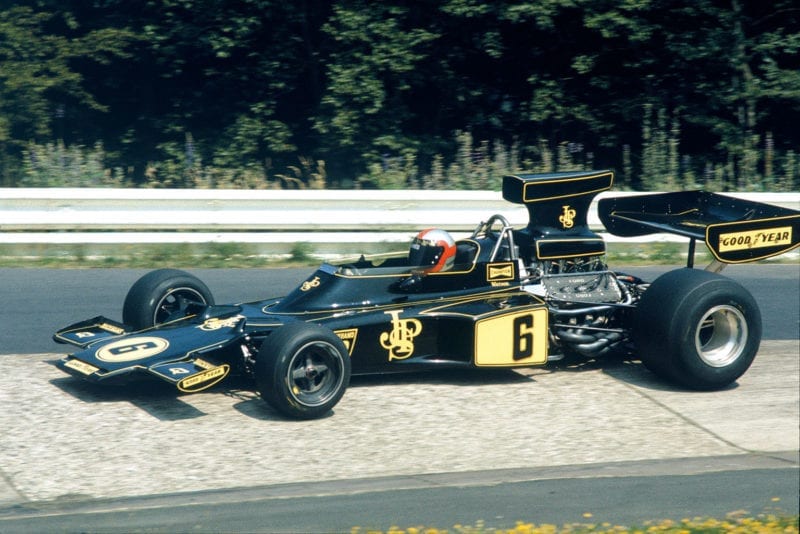
Singleton Team Lotus drive at the Nurburgring in 1975 ended with a suspension breakage
Motorsport Images
“In March 1973 Gordon Murray had just finished his first F1 car, the Brabham BT42 – very different, very narrow, very small – and as a shakedown Bernie put me in it for the Race of Champions. The throttle was sticking a bit, and immaturely I decided to try to drive through the problem. Coming into Stirlings it didn’t close fully, and I ran wide and hit the sleepers. The front of the car was bent through 90 degrees and I was trapped, with my right leg broken. I was in there for about an hour. The marshals tried to saw through the steering rack, and were just blunting their blades. If it had caught fire I couldn’t have got out, but I just had to wait. The race carried on, Peter Gethin won and did his lap of honour, and in the end the Brabham mechanics came over and dismantled the rack, so they could get me out and into the ambulance.”
John’s comeback race was Le Mans, driving a JW Gulf Mirage, and he also did the Watkins Glen Six Hours with Mike Hailwood, finishing fifth. And he did his first two Grands Prix, at Silverstone in a Hexagon-run Brabham, and at Watkins Glen where Bernie ran a third works car. Both ended in retirement. There were some F2 drives, too, but he seemed to be slipping out of the loop. “I was driving anything I could get my bum into, but the Brands Hatch accident had set me back.”
***
The Hexagon F1 effort in 1974 changed all that. With a Brabham BT42, and later a BT44, John did a full Formula 1 season, with far better results than a privateer operation should expect. At Monaco he drove brilliantly, taking sixth place and his first championship point. In Austria he finished fourth after a tyre stop. At Monza he was fastest in final practice. He was on a quicker lap, which could have beaten Niki Lauda’s pole, when a rear wheel broke at Lesmo and pitched the BT44 into the barriers. He started in the works spare BT42, from fourth on the grid, and finished seventh after a pitstop. At Watkins Glen, despite broken suspension, John managed fifth place, bringing his and Hexagon’s points tally for the season to six. But there was no more budget, and the little team folded.
John had also done F2 for Surtees that year, and for 1975 he signed for its one-car F1 effort. “John Surtees was one of the most misunderstood people in racing. Not everybody’s cup of tea as a team boss, maybe because he could jump in any of his cars and perform as well or better than some of the drivers he employed. He was passionate about his racing, probably not very good at delegating, and some of his likes and dislikes were very strong. He was a racing driver/engineer in an era when you already needed to be a commercial businessman to run a team. He got support from Matchbox, but the sums of money were tiny compared to what Philip Morris and Texaco were starting to spend.”

F1 break came at privateer Hexagon team ,where Wattie impressed
Motorsport Images
John’s second place in the Race of Champions ahead of Ronnie Peterson’s Lotus was encouraging, and in the chaotic Spanish GP at Montjuich he qualified sixth. After that it all went downhill. The team missed the German GP, and John drove a JPS Lotus 72 instead, replacing Jacky Ickx. “I got that drive because Colin Chapman couldn’t understand why Watson, in a Surtees, had beaten Peterson, in a Lotus, at Brands Hatch. He was quite upset about that.” Just before Monza, Surtees withdrew from F1 altogether. Rather than take a weekend off, John drove a T33 Alfa in a Nürburgring Interserie race instead. Then he was approached by Penske.
“Mark Donohue’s death in Austria was a tragedy for that team. But they needed to run a car at Watkins Glen, because their sponsor First National City was bringing a lot of important guests, so Heinz Hofer called me. Heinz was a top-class Swiss skier who’d been Roger Penske’s ski instructor in Colorado one winter. Roger liked him, offered him a job, and he ended up as team manager of the F1 operation. At the Glen I qualified 12th in the PC3, which was their March copy, but it expired on the warmup lap. With all those guests, it didn’t look good. They had their original Geoff Ferris-designed PC1 on show on the grass in the hospitality area, not race prepared or anything, but when the PC3 stopped Roger shouted, ‘Put Watson in that car!’ I’d never sat in the damn thing before, but I drove it onto the grid and started from the back. During the race I broke two ribs because the seat didn’t fit me, but I went the distance and finished ninth. So they signed me for 1976. By mid-season we had Geoff’s new PC4 working well, and I was third in France, and third at Brands after James’ disqualification. And in Austria I won.” In wet conditions, John got the better of a three-car battle with Ronnie Peterson and Jody Scheckter to take a classic outsider victory.
“Roger Penske put huge emphasis on presentation. His cars, his transporter, his crew, were always immaculate. He liked a clean-cut image. But I’d had my beard a long time, and I didn’t want people saying I’d shaved it off just because Roger demanded it. So I said to him, ‘When we win a Grand Prix I’ll shave off my beard.’ After I won in Austria we stayed Sunday night in a hotel at Heathrow, because Roger wanted a breakfast meeting next day before he flew back to the States. I got to my room, got the razor out and I had a ceremonial shaving. It wasn’t a pretty sight. It had been a hot summer, so when I took the beard off I looked like a black and white minstrel. I went down to breakfast next morning, and Roger was saying, ‘Where the hell’s Watson?’ ‘Over here, Roger…’ He hadn’t recognised me, didn’t think I’d actually do it.
“At Penske, Heinz Hofer was one of those people who play a pivotal role in your life. He understood me better than any team manager I’ve ever worked with, gave me the ability to go beyond where I might have gone on my own. And for 1977 the plan was to make Penske a full two-car team, and try for Ronnie as the other driver. Then at the end of November Roger called me in the middle of the night, I’d never heard him speak in such a broken voice. ‘John, I’ve got to rationalise. I’m pulling the plug on the F1 team.’ He had USAC, he had NASCAR, he was in a major expansion of his various businesses. The F1 team was more Heinz’s operation, so it was the expendable option. Next morning I went to Poole to see Heinz and the first thing he said was, ‘We’ve got to find you a seat for next season.’ He picked up the phone, called Bernie, and said, ‘You’ve got a seat at Brabham. Can John have it?’ Bernie said, ‘Send Watson to see me at 7pm tonight.’ I duly turned up at that pad he had on the Embankment, with my manager Nick Brittan, and I signed to drive alongside Carlos Pace for 1977 in the flat-12 BT45-Alfa Romeos. In less than 24 hours I’d gone from despair to a really good seat. Of course, it was on Bernie’s terms…
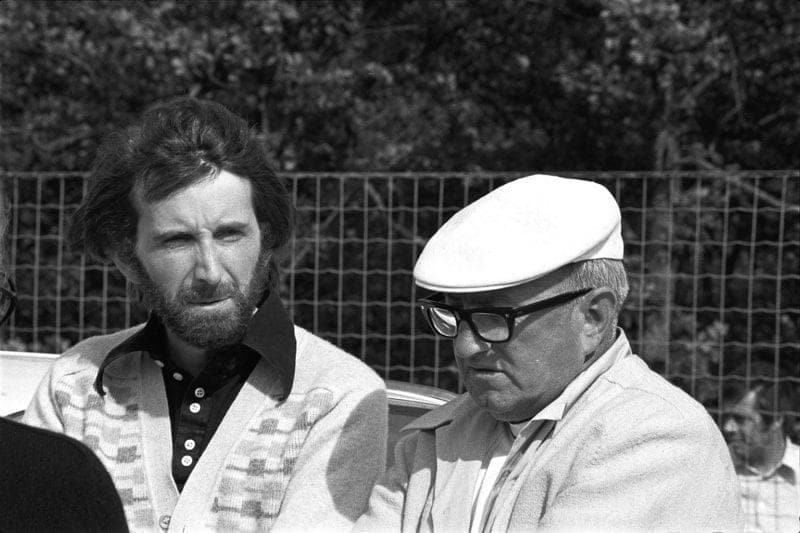
Father Marshall Watson raced for fun
Motorsport Images
“But I was lucky with the timing. Martini, the Brabham sponsor, had been pressing Bernie to hire Clay Regazzoni, because they wanted an Italian-speaking driver, and he was flying in the next day to sign. Herbie Blash had to go to the airport, meet Clay off the plane and tell him to go home to Switzerland.
“Heinz went off to the US to run Penske’s USAC team, but he came back for the winter because he was going to marry his English girlfriend, Linda. Just after Christmas he came over to my house at Bognor for dinner. Heinz had picked up Roger’s new Ferrari Boxer, and was putting some miles on it before it was shipped to the States. He left, I went to bed, and at 2am I had a call from the police. It seems Heinz went the wrong way round the roundabout on the A27 and was going west on the east-bound carriageway. He hit another car head-on. He was killed instantly, and one of the two people in the other car was killed also. That night I had to go to the mortuary to identify him. It was appalling, stupid, tragic. Heinz was the best person I ever worked with in F1.
“My team-mate at Brabham was Carlos Pace. I’d just got pole position for the Race of Champions when news got to Brands that he’d been killed in a light aircraft crash in Brazil. Carlos wasn’t your Lauda-style disciplined driver, just a Latin guy who embraced everything that life offered – wine, women and song. He liked to gamble, Bernie likes to gamble, and the word was that whatever fee Carlos got for 1976 he took as a credit, and by the time the year was over it was all gone. His wife Elida liked to spend, too. In the paddock they called her Miss American Express.
“Bernie was close to Carlos. Bernie’s no softy, but he is much more human than people think. He and Carlos were mates. Bernie’s different today, of course, because the scale of F1, the scale of everything, has changed so much. But he’s still got that sense of humour. Bernie off duty is very funny. His stories of the motor trade and motor racing in the 1950s, you couldn’t make them up. You couldn’t print them, either.
“It’s not generally known that in the early 1970s, after Jackie Stewart retired, he persuaded his manager Mark McCormack of F1’s potential on the world stage. McCormack, through his company IMG, had done a lot in other sports, tennis and golf in particular. At the time Bernie was only just starting to turn his mind to the wider implications of F1. McCormack put a proposal to the F1 constructors that he should take over the TV and marketing rights. Bernie persuaded the team principals that it wouldn’t be a good idea. His response was, let’s do it ourselves. It’s interesting to speculate what might have happened if IMG had taken over, and what Stewart’s role might have been. He’s been a triple World Champion, a team owner, an ambassador. But he never got his hands on the crown jewels…”
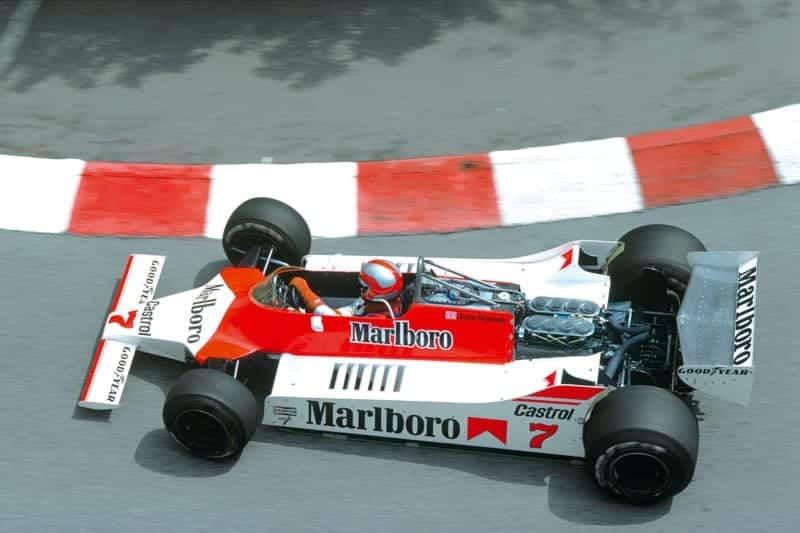
Watson felt sidelined as Prost’s team-mate at McLaren in 1980, but was championship runner-up in 1982
Motorsport Images
John spent two seasons at Brabham, leading his first race for the team in Argentina until the rear suspension started to fall off. At Monaco he took pole, and chased Jody Scheckter’s Wolf for the lead until his gearbox failed. He led the Belgian GP from the start, but was punted off by Mario Andretti, and was nudged off in Sweden by Scheckter while second. Then came the French GP at Dijon, where John planted the bulky Brabham-Alfa at the head of the field on lap five and stayed there. “It was going to be a great victory. I’d fought off a hard challenge from Mario in the Lotus 78, and on the last lap, coming out of that hairpin round the back, the engine stuttered. Fuel starvation. Mario was gone, I finished second. Two weeks later I was leading at Silverstone, and it happened again. Two races we should have won.
“At the end of 1977 Bernie said to me, ‘Niki [Lauda] wants to join Brabham, what d’you think?’ I said, ‘I’ve got no problem with that. All I ask is that we get equal treatment.’ What I didn’t realise was that Niki, apart from his abilities as a driver, his conciseness of thought, his good communication, knew how to be political. He’d learned that at BRM, and then of course at Ferrari. He brought Parmalat to Brabham, a significant lever for him, and he came as a two-time champion. He was a very clever operator. He was able to pull the team round him and subtly say, John’s a lovely guy, very quick, but I’m the one who will win for you. Soon there were tiny signs that I wasn’t getting as much out of the team as I should. It wasn’t their fault, it was my fault. I’m a slow learner, I wasn’t as savvy as Niki. He was probably the first tough team-mate I’d had, and he was doing what was right for him. Even so, we got on very well, we had lots of laughs.”
For 1978 Gordon Murray came up with his radical surface cooling concept. “Bernie gave Gordon a free rein, and Gordon never followed convention. The BT45 was a big bruiser to accommodate the Alfa engine, which needed more fuel than the Cosworth. The BT46 was much more compact. I drove it at Balocco, the Alfa test track, and losing the drag imposed by a normal radiator was like having another 100bhp. But the surface cooling area was a fraction of what was required, so actually it was a disaster. They had to hang a big radiator on the front as an afterthought.
“Gordon’s answer to that, of course, was the fan car, the BT46B. After its one race in Sweden and the outcry from the other teams, Bernie agreed not to run it again. Colin Chapman in particular was apoplectic with rage. Two weeks later at Paul Ricard we were back with the BT46, and I gave Chapman and Andretti the bird by putting it on pole. But on race morning Bernie said to me, ‘I want to ask you a question. Niki’s got more points than you in the championship, so if you’re leading on the last lap and he’s second, will you pull over and give him the win?’ This was only halfway through the season, remember. I felt he’d sucked the oxygen out of me. Perhaps I should have lied, but I was naïve enough to be honest, and I said, ‘No, Bernie, I can’t do that.’ Thereafter it became clear, not in any tangible way but clear to me, that my days at Brabham were numbered.”
So for 1979 John went to McLaren, where he was to stay for five years. Initially this was the pre-Ron Dennis McLaren, with Teddy ‘The Wiener’ Mayer at the helm. “That first season was a disaster. McLaren didn’t understand ground-effects, and the M28 had the structural rigidity of this table napkin. By the time they’d got the honeycomb monocoque reasonably strong it weighed a ton. So, under pressure from Marlboro, in the space of six weeks they produced the M29, their version of a Lotus 79, and that was much better. My team-mate was Patrick Tambay, but The Wiener decided to test some young hot-shoes. He came up with Kevin Cogan, and Marlboro fielded a French F3 hero called Alain Prost. We went to Ricard, I did a few laps, then Cogan went out.
“You can usually tell in seconds if someone knows what they’re doing in an F1 car, and Cogan didn’t. But Alain, it was like he was born in that car. No question about his speed, he gave concise and accurate feedback, he embraced the team at once, and they embraced him. Alain became the weapon for Teddy to hit back at Marlboro, who were trying to move McLaren into Ron Dennis’ Project Four operation. They weren’t prepared to force the issue at that stage, and Teddy had the balls to face up to them. Alain in his first F1 year was like Lewis Hamilton in 2007, but with a less competitive car.
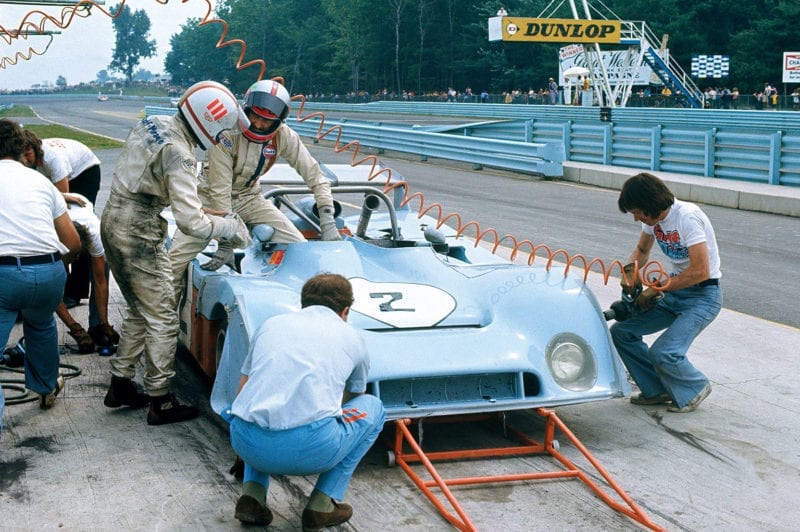
Racing to fifth with Mike Hailwood in 1973 Watkins Glen Six Hours aboard Gulf Mirage M6-Ford
Motorsport Images
“So once again I found myself being sidelined, which wasn’t nice. Gordon Coppuck copped a lot of flak for the M29’s shortcomings, which wasn’t necessarily fair. They brought in Robin Herd as a consultant, he did some serious wind tunnel work, and through 1980 it got better. But McLaren were also working on a secret project, which appeared at Zandvoort. This was the M30, the culmination of all Alain’s input. But fundamentally it never worked. I stuck with the M29, Alain went with the M30 and I started to get the upper hand in the team again. Alain was now being courted by Renault, he knew we were going into the turbo era and McLaren hadn’t got a turbo. We got to the last race of the year at Watkins Glen, and in practice the M30’s suspension broke and Alain had a big old shunt. I went to the medical centre to see him, and he said, ‘John, you will be number one at McLaren next year. I will never drive a McLaren again.’
“In fact McLaren had him on a long-term contract, but Marlboro eased his exit and continued their sponsorship of him at Renault. As part of the deal, McLaren had to take Andrea de Cesaris, whose family was friendly with Aleardo Buzzi of Philip Morris. Then the Ron Dennis/John Barnard takeover happened. There was an interim period when Teddy and Tyler Alexander still had 50 per cent of the company, and Ron and John had the other 50 per cent, but it was always going to be an exit for Teddy and Tyler – although Tyler still works there, even now. Mansour Ojjeh came in soon after.”
John Barnard’s 1981 car, the McLaren MP4, used a full carbonfibre monocoque developed with the Hercules Corporation in the USA. “Carbon fibre was very new then. We didn’t really know what would happen to the driver in an accident. Fortunately for me, de Cesaris did a lot of the crash testing! John Barnard had a reputation for being difficult because he could never accept any sort of compromise. He wanted to control every detail of the car. Up to then a lot of how F1 cars were built was guided by the mechanics. You’d have the basic design, and the mechanics would put it together, so for convenience they might change where, say, a catch tank was sited. If anybody did that to one of Barnard’s cars he’d be out the door. ‘It’s my car, I designed it, I’ll decide what it does and doesn’t have.’ John raised the levels of precision engineering in F1, took it into a new era. Up to then no one had been as fastidious. If there was a more complicated way of making a component, John would specify it. Every little piece was like a Fabergé egg.” It took time to get the MP4 up to speed, but in three consecutive races John finished third (Spain), second (France) and then scored a heart-warming victory in the British GP at Silverstone. In the wet in Canada he finished second, and set fastest race lap. And for 1982 he got Lauda back as his team-mate.
“Having spent two years on his airline, a substantial Marlboro pay packet helped him decide that he wanted to go racing again. It was a one-year deal, with a break point after three races if he didn’t deliver. He set about it the way he always did things, he got Willi Dungl to sort out his fitness, he got the key people in the team around him, told them, ‘I’m the guy who will deliver for you.’ But in fairness to Ron – and he’s done this throughout his career – we always had totally identical equipment.”
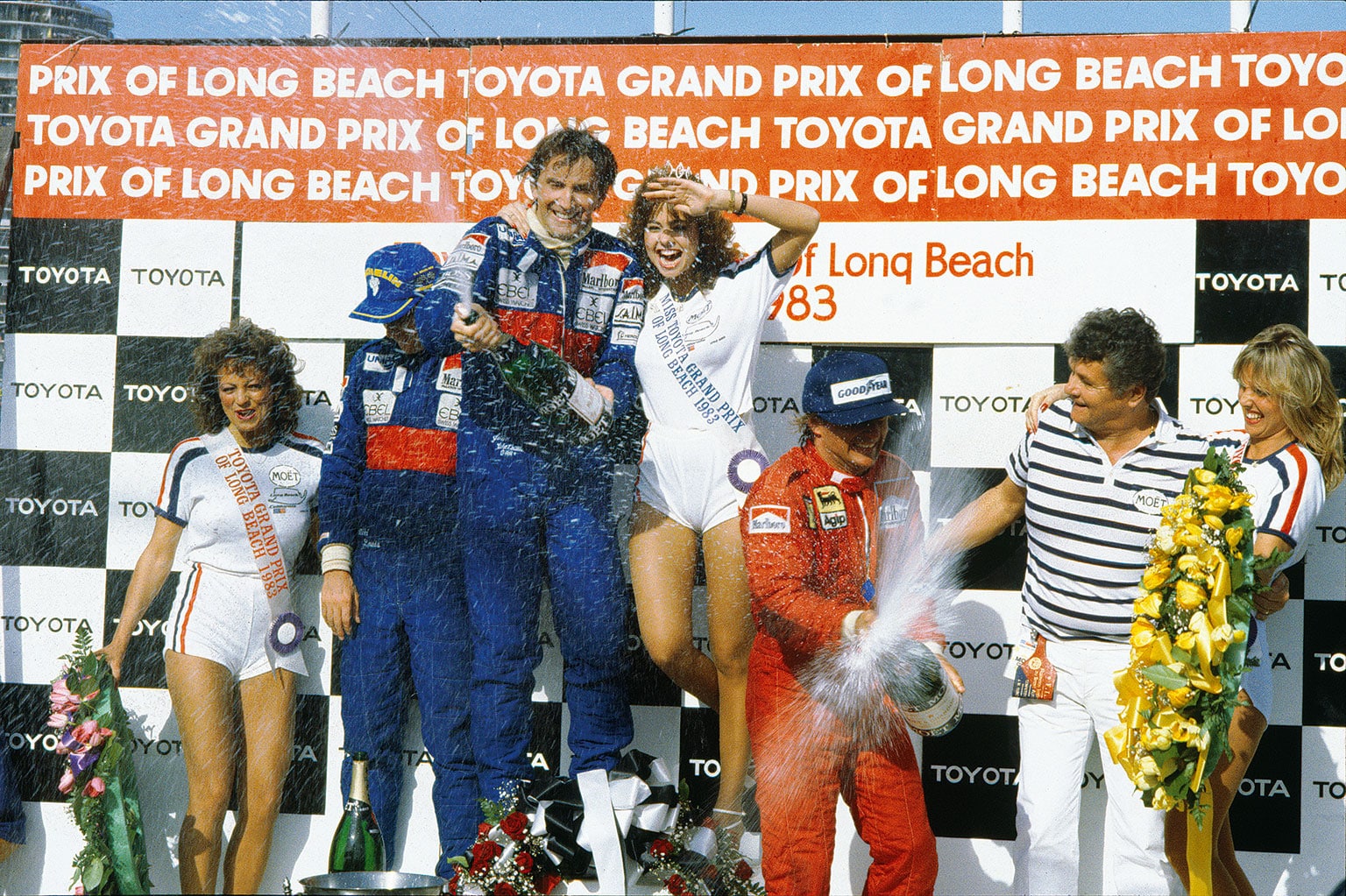
***
In 1982, although Niki confirmed his place in the team by winning his third race, John soon got the upper hand. He beat Niki to win at Zolder, and four weeks later came his most famous win, on the tight street circuit in Detroit. “We were on the Michelin 06s, and in qualifying I couldn’t get enough core tyre temperature, couldn’t get the speed into the car. So I was 17th on the grid. Six laps into the race Riccardo Patrese hit the barriers and there was a red flag. While they cleared the track Pierre du Pasquier of Michelin persuaded me to change onto the 05s. After the restart, with a full fuel load getting more energy into the tyres, I found I had more grip, and I was catching people. The key with overtaking is you mustn’t lose your momentum. You’ve got to arrive, complete the job and move on. I passed a lot of people, and by the time I caught up to Niki I was fifth. Niki was stuck behind Eddie Cheever and Didier Pironi. I went by him, then I did Cheever. Cheever tried to squeeze me, but I kept on coming, drove under him and he swerved away. Then I did Pironi. And Niki reprogrammed his mind, saw it was possible, and followed me through. Keke Rosberg was leading in the Williams, and I caught and passed him without problem. Keke was a pragmatist, he knew I was faster that day. Behind me, Niki came up to Keke, went for him up the inside at Turn 1, but he wasn’t decisive enough. Keke shut the door, and Niki was in the wall.
“Now I was leading the World Championship. But then I had six races out of the points, various silly things. So we got to the last race at Las Vegas. If I won, and Keke didn’t score, I would be champion. But all Keke had to do was finish sixth. As it was, I finished second – we never did work out why Michele Alboreto’s Tyrrell was quite so quick that day – and Keke finished fifth. I’d done the best I could, and that was that.”
In 1983, at Long Beach, John turned in another of his trademark up-the-field races to victory. “I qualified 22nd, Niki 23rd. In the McLaren motorhome Ron, John Barnard and John Hogan of Marlboro had faces like Lurgan spades. They thought we were just a pair of old farts. It was all about grip again. Once we were into the race and got some heat in the rubber we went forward in tandem, Niki ahead and me stuck to his gearbox. Eventually I went for him at the end of the straight, shot down the inside. He didn’t like that at all, but he didn’t resist and I was gone. So I won, Niki was second, and in the McLaren motorhome they were just shell-shocked…
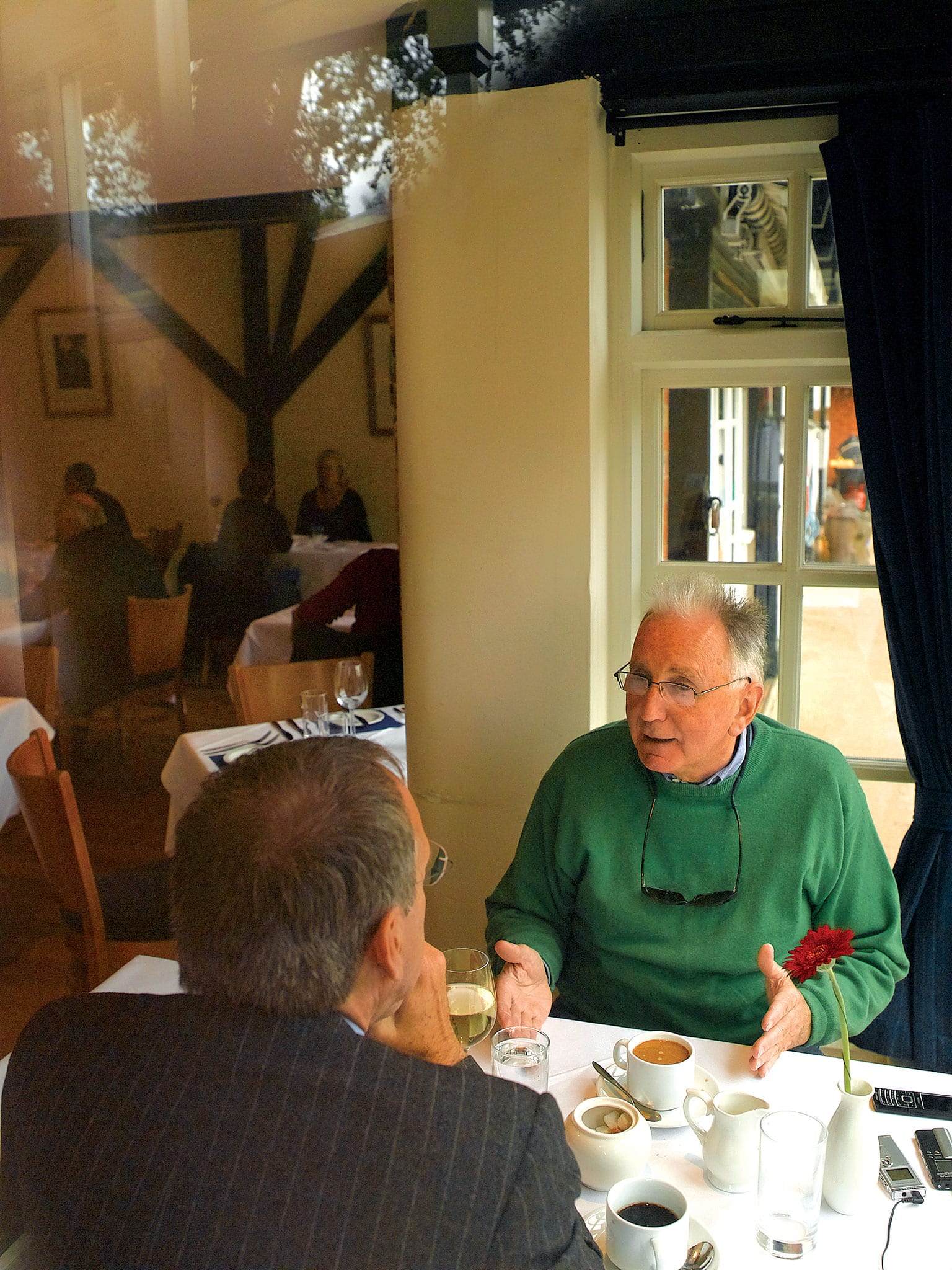
“In South Africa, at the last race of the year, I agreed with Ron that we’d talk about my 1984 contract as soon as we got back to England. I assumed I’d be carrying on. We flew home, and next morning I had a call from Niki. He’d heard Alain Prost was at McLaren, and they wanted to sign him. Prost was contracted to Renault, but he’d been summoned to Renault HQ and summarily fired, allegedly because he’d been indiscreet with the wife of a senior team member. At once he’d called John Hogan, because of course he was a Marlboro driver, to see if he could get into Ferrari. John said, ‘They’re locked up, they’ve got Alboreto and Arnoux. But at McLaren Niki’s in contract, John’s out of contract. There’s a seat there.’
“Niki didn’t want Prost at McLaren, because he saw him as a bigger threat than me. He wanted to win another championship, but he didn’t want to have to drive his fingernails off to beat a man like Prost, who was just coming into the sweet spot of his career.
“I went down to see Ron, and he said, ‘That’s the way it is.’ I wasn’t bitter. I was 37 years old, I’d had 10 years of F1. I’d have liked to carry on at McLaren, but I didn’t want to have to start a new relationship with another team. Peter Warr contacted me about driving for Lotus. Players were insisting on an English driver alongside Senna, and the incumbent, Nigel Mansell, wasn’t Warr’s favourite. But he didn’t really want me, he just wanted an English driver who wasn’t Mansell. It didn’t feel right.
“To wean myself off the drug, I took up sports car racing. In 1984 I drove some races with Porsche, finishing up in Japan, which we won – well, Stefan Bellof won, I was his co-driver. Stefan could take a Porsche 956 into places where no one else, not Jacky [Ickx], Derek [Bell] or Jochen [Mass], could go. The team loved him: they loved seeing their cars being driven on the limit. When Stefan was killed at Spa in 1985 he was doing just that, taking it to the limit by the scruff of the neck.
“I did BMW in North America, driving a March-constructed car with David Hobbs. I drove for Jaguar at Le Mans three times, then for Toyota. It was a way of tapering off my career. Then I started broadcasting, first for BBC Radio, then F1 on Eurosport and now A1GP on Sky. I love doing A1: it’s entertaining racing, and Ben Edwards does a fantastic job as the main commentator. And I don’t just walk the track for the programme, I drive it in an A1 car.”
John’s daily drive is the inevitable Mercedes, but cherished in his garage are two classic Porsches, fruit of a love affair that goes back to when he saw his first Porsche at Dundrod in 1955. His 356 he has had 20 years, and his 911RS Touring for 34 years, ever since he took it off Paul Michaels’ showroom floor in part payment for his season with the Hexagon Brabham.
“I did 150-plus Grands Prix, I finished second in the World Championship, I won some races. I feel I should have achieved more. I know I had the ability in terms of my speed in the car, and there were races that should have come to me and didn’t. But I can’t change any of that. It’s in the book…”
